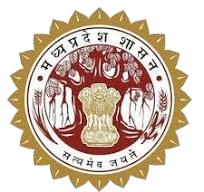About Sagar Madhya Pradesh.

Madhya Pradesh is the heart of India. it was established on 1st November 1956. In the present days, there are 10 Divisions and 52 Districts in Madhya Pradesh. Sagar is also a Division in which there are 5 districts – Sagar, Damoh, Chhatarpur, Panna and Tikamgarh. Sagar was given the status of District by the British Government in 1861. In those days, the British had formed the Central Province. That time it was called as Saugor and Narmada Territory. After independence when the states were formed in 1956, Sagar became an independent District of Madhya Pradesh and in 1973, it was given the status of Division. Presently, Sagar district is divided into 8 Tehseels – Sagar, Banda, Rahli, Garhkota, Deori, Khurai, Bina and Rahatgarh and there are 8 MLAs and 1 MP in Sagar district.
History of Sagar starts from prehistoric age. Historical evidences state that Sagar city was established by Udyanshah a Bundela king of the Bundela Dynasty in 1660 AD. Later, it was developed by Govind Pant Bundela the Maratha General and then by the British. Sagar is situated on the Bina-Katni Rail section. Sagar is about 200 kms from Bhopal as well as from Jabalpur and as well as from Jhansi too by rail and road. It is situated on the Jhansi-Nagpur highway. Sagar is a city in the state of Madhya Pradesh in central India. Situated on a spur of the Vindhya Range and 1,758 feet (536 m) above sea-level. Its original name 'Saugor' (Hindi: ?????) is an amalgamation of two words : Sau means Hundred (100) and garh means forts; there were countless small-forts in this region. Diring British time it was Saugor and with time the name has changed from Saugor to Sagar.
Sagar has humid subtropical climate with hot summers, a somewhat cooler monsoon season and cool winters. Very heavy rain falls in the monsoon season from June to September.
As of the 2011 India census, Sagar had a population of 2,378,458 of which male and female were 1,256,257 and 1,122,201 respectively. Average literacy rates of Sagar in 2011 were 76.46. Gender-wise, male and female literacy rates were 84.85 and 67.02 respectively in 2011. The total number of literates in Sagar District were 1,545,719 of which male and female were 908,607 and 637,112 respectively. Sagar has the credit of having the oldest university of Madhya Pradesh which was started by the great personality of this city, Dr. Sir Hari Singh Gour in 1946 with his own money. Currently, it has become a Central University. It is called as Dr. Hari Singh Gaur University, Sagar. Previously it was called "University of Saugor".
Sagar has the oldest Police college of Madhya Pradesh. Apart from this, there are three government colleges and 48 private colleges in Sagar. There is one Government Engineering College and one Government Medical College. Apart from this, there is one private university also which is called as Swami Vivekananda University. There are Nursing, Engineering, Management and Polytechnic colleges also in Sagar.
Sagar has the oldest lake in the heart of the city and is surrounded by the broad walls called Parkota. it is believed that this lake was built by a banjara named Lakha. Bundela kings made a fort and a palace too in Sagar. At present Jawahar Lal Police Academy runs at the fort and the palace called Garhapahara Palace is now a tourist point. Sagar has been a big army centre also since British time. The oldest St. Peter's Church is situated in cantt was built in 1841 AD. There is a very famous Jain Pilgrim centre in Sagar is called Bhagyodaya Teerth. Makronia is a new township of Sagar, we can say it new Sagar too.
Sagar has been selected as one of the hundred Indian cities to be developed as a smart city under PM Narendra Modi's flagship Smart Cities Mission and listed top safest city of india 2018.

